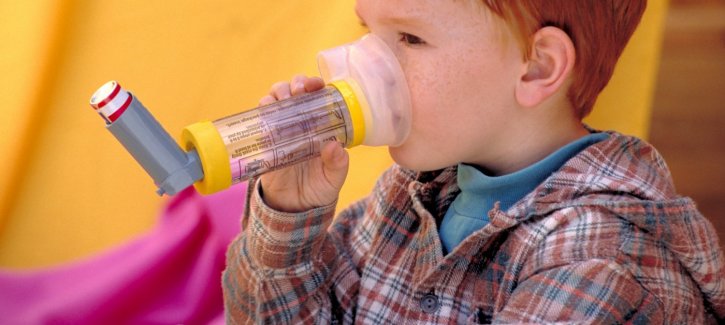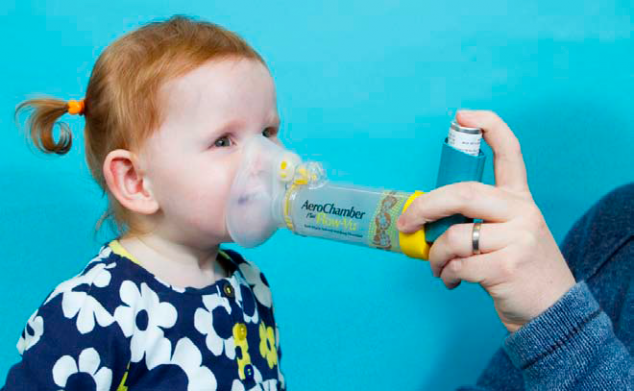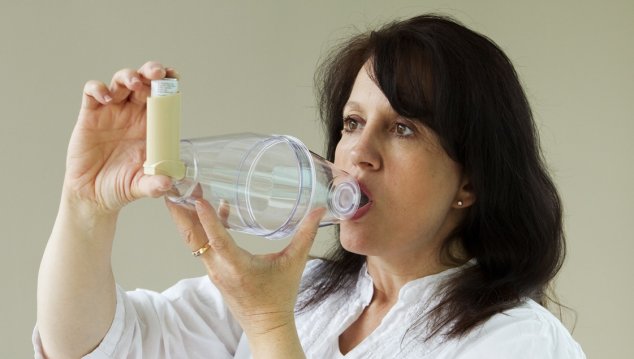Asthma medication can be given to your child in a variety of ways. It is important that children have their inhaler and spacer technique checked by a doctor, nurse or pharmacist regularly.

What is a Spacer Device?
An inhaler is the most effective method of giving asthma medication as it ensures that the medication goes directly to the lungs where it’s needed, and requires smaller dosages than tablets. A spacer device is a plastic container with a mouthpiece or mask at one end, and space to insert an inhaler at the other. Spacer devices ensure the person with asthma gets the maximum benefit from their medication and helps direct it to where it's needed in the lungs.
- They make inhalers easier to use
- They increase the amount of medication that reaches the airways
- They reduce the risk of side effects from controller medication, such as oral thrush
They should be replaced annually at least.. You can view demonstration videos on inhaler and spacer technique here

How to Use a Spacer with a Mask
Spacers with masks are generally used to improve the delivery of inhaled medication for children.
- Shake the inhaler
- Insert the inhaler into the spacer
- Place the mask over the child’s mouth and nose, ensuring that there is a tight seal
- Press the inhaler once and allow the child to breath in and out slowly five times
- Some spacers have a valve which shows the breath going in and out. If so, you can watch this to make sure your child takes five breaths of their medication
- Repeat steps 2-5 for each prescribed dose of medication.
Top Tips for Using a Spacer with a Mask
- Let your child play with their spacer before they use it so they get used to it.
- Be positive – your child will sense if you’re anxious.
- Avoid giving children medication when they are upset as it may make things worse and reduce the amount of medication they breathe in.
- Distract your child with music or videos.
- It is better to give children their medication when they are awake.
- Count out loud to six each time you give them a puff of inhaler so they know how long they have to breathe through the spacer, and remove the mask on the count of six.
- Praise your child after they have taken their inhaler.
- Always wipe your child’s face after they have taken their controller inhaler.

How to Use a Spacer with a Mouthpiece
- Assemble the spacer if it comes in two halves
- Shake the inhaler
- Insert the inhaler into the spacer
- Grip the mouthpiece with your teeth and place your lips around it
- Press the inhaler once and breath in and out slowly five times
- Some spacers have a valve which shows the breath going in and out. If using the spacer for a child, you can watch this to make sure your child takes five breaths of their medication
- Repeat steps 3-6 for each prescribed dose of medication.
- Only release one puff of medication into a spacer at a time.
- Always follow the manufacturer’s instructions for care and replacement guidelines.
Top Tips for Using a Spacer with a Mouthpiece for a Child
- Show your child how to use the inhaler and spacer without releasing a puff of medication.
- Let them decorate their spacer with stickers.
- Count out loud with each breath.
- Let your child play with their spacer and practice with their teddy or doll before they need to take their medication.
- Stick to a routine and give medication at the same time each day-usually before they brush their teeth.
- Praise children for taking their medication or use a sticker chart to reward them.


